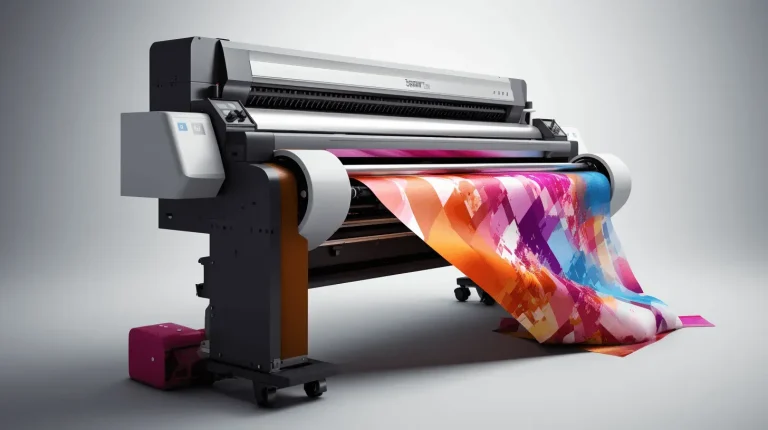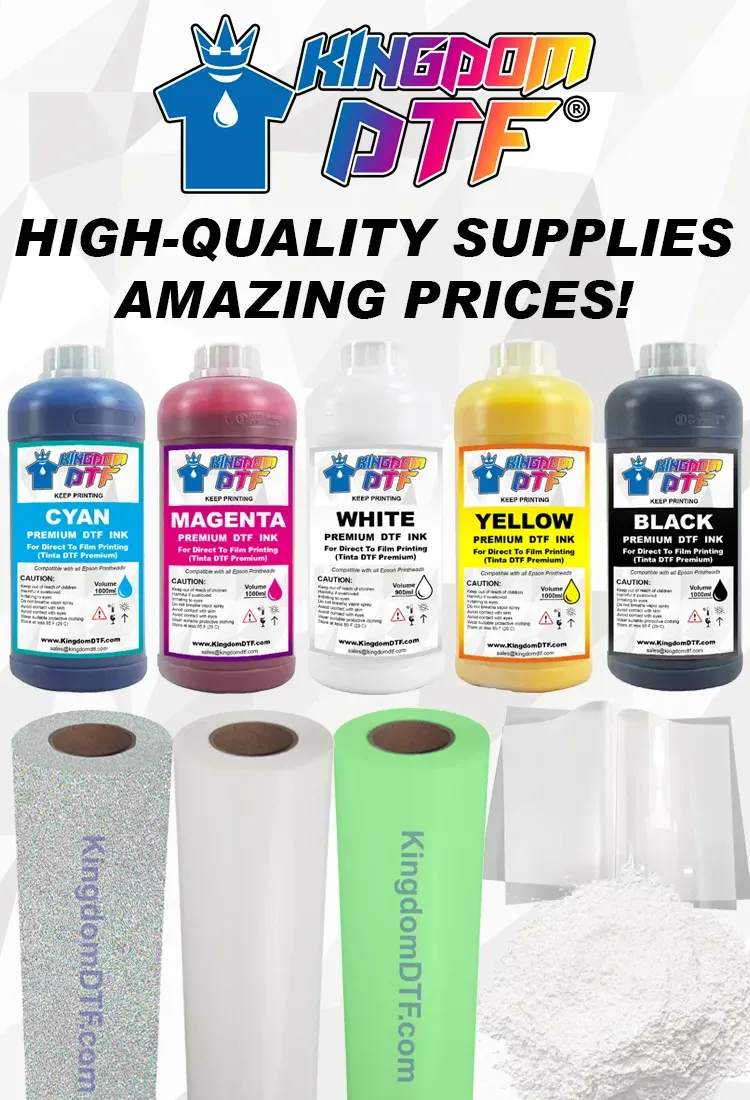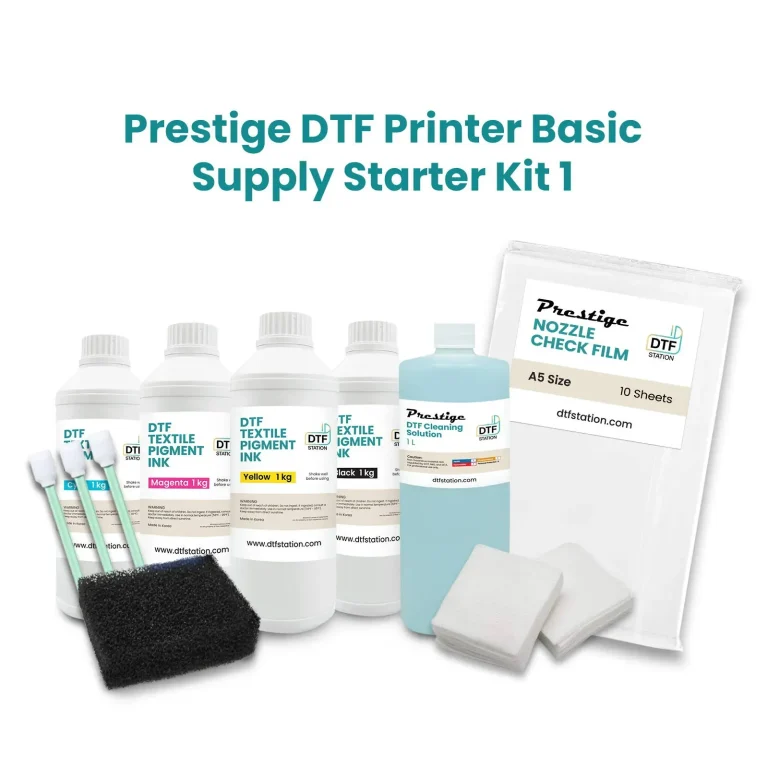Maintaining DTF supplies is essential for anyone looking to optimize their Direct-to-Film printing experience. Ensuring that your materials are properly cared for directly impacts the quality of your prints and the lifespan of your printing equipment. In this guide, we will delve into effective DTF printing maintenance techniques, including proper storage conditions and routine quality checks. Learning how to care for DTF supplies, such as selecting the best practices for DTF materials and managing supplies efficiently, will enhance your printing performance significantly. By incorporating these DTF printing tips, you can avoid costly mistakes and achieve stunning results in your projects.
The process of preserving DTF materials—such as films and inks—is crucial for achieving exceptional printing outcomes. Direct-to-Film technology demands careful supply management to ensure that equipment operates at peak efficiency. Understanding the nuances of DTF maintenance involves recognizing the importance of factors such as optimal storage conditions, regular printer upkeep, and the use of quality inks. This approach not only guards against issues like material degradation but also supports consistent print quality. As we explore effective strategies for keeping your DTF supplies in top shape, you will discover the benefits of adhering to best practices in your printing endeavors.
The Importance of Proper Storage for DTF Supplies
Proper storage conditions play a significant role in extending the life of DTF supplies. To maintain quality, DTF films and inks should be stored in a controlled environment where the temperature stays between 15-25°C (59-77°F). This range is crucial because elevated temperatures can cause distortion and degradation of print materials. Furthermore, humidity levels should be kept below 50% to prevent moisture-related damage such as warping or degradation of film. In short, an optimally controlled storage environment ensures that your DTF supplies remain reliable and effective.
Another essential aspect of maintaining DTF supplies is protecting them from ultraviolet (UV) light. Prolonged exposure to sunlight can weaken the integrity of the DTF films and inks, leading to faded colors and poor adhesion during the printing process. To mitigate this risk, it’s best to keep your DTF supplies in dark cabinets or storage containers. By taking these simple steps, DTF printer operators can enhance the durability and performance of their printing materials.
Regular Maintenance for Optimal DTF Printing
Regular maintenance of DTF printers is paramount to achieving high-quality prints. One of the key components in printer maintenance is the routine cleaning of print heads. Over time, print heads can clog due to dried ink or debris, resulting in streaks and inconsistencies in prints. By adhering to the manufacturer’s guidelines and incorporating regular cleaning routines, operators can significantly reduce the chances of such issues occurring.
In addition to print head maintenance, it is vital to perform ink system checks regularly. Replacing ink cartridges before they completely run out ensures a seamless workflow and prevents sputtering or distortion in prints. Regular inspections and preventative care in maintenance can lead to more consistent printing results and overall operational efficiency in DTF printing.
Utilizing Quality Inks and Films for DTF Success
Using high-quality inks and films is essential for optimal DTF printing. It’s crucial to source supplies from reputable manufacturers that offer consistency in their products. Mismatched inks and films can lead to adhesion problems, which directly impact the quality and durability of the final print. By investing in quality materials, operators can minimize issues and enhance their overall printing experience.
Furthermore, operators must be diligent about tracking expiration dates for DTF supplies. Utilizing expired inks or films can result in poor adhesion, leading to unsatisfactory prints. Maintaining a well-organized inventory with regular checks on the freshness of supplies will ensure that operators are always equipped with optimal materials, preventing any potential printing setbacks.
Printer Settings: The Key to DTF Printing Quality
Adjusting printer settings specifically for DTF printing is critical in achieving the best outcomes. Factors such as temperature, speed, and ink density should align with the type of materials being used. Each type of film and fabric may require unique settings to maximize print quality and prevent issues like smudging or fading. Taking the time to customize these settings according to the specific supply can lead to significantly better results.
Conducting test prints before initiating larger runs is another vital practice in ensuring high-quality DTF outputs. By testing different settings and materials on a smaller scale, operators can fine-tune their printer configurations. This not only helps in identifying the ideal settings but also in preventing waste of valuable supplies during larger print jobs.
Conducting Routine Quality Checks in DTF Printing
Implementing routine quality checks is fundamental to maintaining the high standards of DTF printing. Regularly inspecting prints for inconsistencies such as color mismatches or missing details allows for early detection of potential problems. By addressing these issues promptly, operators can save substantial time and resources while ensuring the quality of their work remains intact.
Moreover, documenting the performance of DTF supplies can provide insightful data for future practices. Keeping records of past problems and the measures taken can help in identifying trends over time. By learning from past experiences, operators can continuously enhance their quality assurance processes, leading to more efficient and consistent printing outcomes.
Best Practices for Supply Management in DTF Printing
Effective supply management for DTF printing involves not just procurement but also ensuring optimal usage and maintenance of materials. Keeping an organized stock of necessary inks, films, and other supplies allows operators to manage their inventory better and reduce unnecessary downtime. An organized supply system will help avoid last-minute scrambles for critical materials, which can adversely affect production schedules.
In addition, implementing a soft monitoring system for supplies, including tracking usage rates and reordering schedules, can streamline operation workflows. This practice helps in maintaining quality while also ensuring that no essential materials go unused or expire before replenishment. By following these best practices, DTF printers can significantly enhance their overall operational efficiency and quality outcomes.
Frequently Asked Questions
What are the best practices for maintaining DTF supplies?
To maintain DTF supplies effectively, ensure they are stored in controlled temperature and humidity environments, keep away from UV light, and regularly clean the printer heads. Using high-quality and compatible inks and films, adjusting printer settings appropriately, and conducting routine quality checks are also crucial.
How should I store DTF supplies to ensure their longevity?
Store DTF supplies at temperatures between 15-25°C (59-77°F) with humidity levels below 50%. Keep them in dark, cool areas to protect against UV light exposure, and use airtight containers to prevent moisture damage.
What are common maintenance tips for DTF printing equipment?
Regular cleaning of print heads and checking ink systems are vital for DTF printing maintenance. Ensure ink cartridges are replaced before they run out and perform routine inspections for any clogging to maintain optimal performance.
How can I care for my DTF films to prevent degradation?
Prevent degradation of DTF films by storing them away from direct sunlight and maintaining a stable environment. Regularly inspect your films for any signs of damage and avoid using expired materials to ensure high print quality.
What adjustments should I make to printer settings for DTF materials?
Adjust printer settings such as temperature, speed, and ink density according to the specific DTF materials being used. Conduct test prints to ensure these settings optimize print quality and minimize waste.
Why is it important to perform routine quality checks on DTF prints?
Routine quality checks help identify issues like color mismatches or print defects early, allowing for timely maintenance and adjustments. Documenting these checks also aids in tracking the performance of DTF supplies, leading to improved print outcomes.
| Key Aspect | Best Practices |
|---|---|
| Proper Storage Conditions | Maintain temperature between 15-25°C and humidity below 50%. Protect from UV light. |
| Regular Maintenance of Printers | Clean the print head regularly and check the ink system. |
| Use Quality Inks and Films | Ensure supplies are compatible and check expiration dates. |
| Printer Settings Adjustment | Customize settings based on materials and conduct test prints. |
| Routine Quality Checks | Inspect prints regularly and document performance for improvements. |
Summary
Maintain DTF Supplies to ensure high-quality results and extend the lifespan of your printing equipment. This involves several key practices, including proper storage conditions, which help prevent material degradation, and regular maintenance checks to ensure optimal printer performance. Additionally, using high-quality inks and films is critical for achieving excellent print quality. Adjusting printer settings specifically for the materials used, along with conducting routine quality inspections, allows for fine-tuning and enhances the overall printing experience. By following these guidelines, operators can effectively maintain their DTF supplies for sustained performance in their printing endeavors.







